Metaheuristics with Deep Learning Model for Cybersecurity and Android Malware Detection and Classification
Abstract
:1. Introduction
2. Literature Review
3. The Proposed Model
3.1. Feature Extraction
3.2. Algorithmic Procedure of RHSO-FS Technique
| Algorithm 1: Proposed RHSO Algorithm |
| Generate a primary population of and of agents arbitrarily. Fixed the dimensional of problems, , whereas refers to the count of agents. Fixed Low to 1 and High to , whereas High and Low signify high and low dimensional, correspondingly. Make the value of and , in which denotes the random number and denotes the random radius . Make testing and training data. Fixed iter maximal count of iterations. Compute all the agents’ fitness. Set Leader optimum agents. Set While for to n do Upgrade Leader position. Upgrade the position of all the searching agents. Compute the Newfitness of all the searching agents. Choose the better member of the population Upgrade the angle. If then Upgrade the position of all the searching agents. fitness . end if end for end while Return the optimum agent |
3.3. Malware Detection Using ARAE Model
3.4. Hyperparameter Tuning
4. Performance Validation
5. Conclusions
Author Contributions
Funding
Institutional Review Board Statement
Informed Consent Statement
Data Availability Statement
Conflicts of Interest
References
- Liu, K.; Xu, S.; Xu, G.; Zhang, M.; Sun, D.; Liu, H. A Review of Android Malware Detection Approaches Based on Machine Learning. IEEE Access 2020, 8, 124579–124607. [Google Scholar] [CrossRef]
- Zhao, S.; Li, S.; Qi, L.; Xu, L.D. Computational Intelligence Enabled Cybersecurity for the Internet of Things. IEEE Trans. Emerg. Top. Comput. Intell. 2020, 4, 666–674. [Google Scholar] [CrossRef]
- Dovom, E.M.; Azmoodeh, A.; Dehghantanha, A.; Newton, D.E.; Parizi, R.M.; Karimipour, H. Fuzzy pattern tree for edge malware detection and categorization in IoT. J. Syst. Archit. 2019, 97, 1–7. [Google Scholar] [CrossRef]
- Sicato, J.C.S.; Sharma, P.K.; Loia, V.; Park, J.H. VPNFilter Malware Analysis on Cyber Threat in Smart Home Network. Applied Sciences 2019, 9, 2763. [Google Scholar] [CrossRef]
- Shah, Y.; Sengupta, S. A survey on Classification of Cyber-attacks on IoT and IIoT devices. In Proceedings of the 11th IEEE Annual Ubiquitous Computing, Electronics & Mobile Communication Conference (UEMCON), New York, NY, USA, 28–31 October 2020; pp. 406–413. [Google Scholar] [CrossRef]
- Ali, S.; Bhargava, A.; Saxena, A.; Kumar, P. A Hybrid Marine Predator Sine Cosine Algorithm for Parameter Selec-tion of Hybrid Active Power Filter. Mathematics 2023, 11, 598. [Google Scholar] [CrossRef]
- Aziz, R.M.; Mahto, R.; Goel, K.; Das, A.; Kumar, P.; Saxena, A. Modified Genetic Algorithm with Deep Learning for Fraud Transactions of Ethereum Smart Contract. Appl. Sci. 2023, 13, 697. [Google Scholar] [CrossRef]
- Inayat, U.; Zia, M.F.; Mahmood, S.; Khalid, H.M.; Benbouzid, M. Learning-Based Methods for Cyber Attacks Detection in IoT Systems: A Survey on Methods, Analysis, and Future Prospects. Electronics 2022, 11, 1502. [Google Scholar] [CrossRef]
- Aziz, R.M.; Hussain, A.; Sharma, P.; Kumar, P. Machine learning-based soft computing regression analysis ap-proach for crime data prediction. Karbala Int. J. Mod. Sci. 2022, 8, 1–19. [Google Scholar] [CrossRef]
- Aziz, R.M.; Baluch, M.F.; Patel, S.; Kumar, P. A machine learning based approach to detect the Ethereum fraud transactions with limited attributes. Karbala Int. J. Mod. Sci. 2022, 8, 139–151. [Google Scholar] [CrossRef]
- Smmarwar, S.K.; Gupta, G.P.; Kumar, S.; Kumar, P. An optimized and efficient android malware detection framework for future sustainable computing. Sustain. Energy Technol. Assess. 2022, 54, 102852. [Google Scholar] [CrossRef]
- Sharma, R.M.; Agrawal, C.P. MH-DLdroid: A Meta-Heuristic and Deep Learning-Based Hybrid Approach for Android Malware Detection. Int. J. Intell. Eng. Syst 2022, 15, 425–435. [Google Scholar]
- Jebin Bose, S.; Kalaiselvi, R. An optimal detection of android malware using dynamic attention-based LSTM classifier. J. Intell. Fuzzy Syst. 2018, 34, 1277–1288. [Google Scholar] [CrossRef]
- Alzubi, O.A.; Alzubi, J.A.; Al-Zoubi, A.M.; Hassonah, M.A.; Kose, U. An efficient malware detection approach with feature weighting based on Harris Hawks optimization. Clust. Comput. 2022, 25, 2369–2387. [Google Scholar] [CrossRef]
- Bhagwat, S.; Gupta, G.P. Android Malware Detection Using Hybrid Meta-heuristic Feature Selection and Ensemble Learning Techniques. In International Conference on Advances in Computing and Data Sciences; Springer: Cham, Germany, 2022; pp. 145–156. [Google Scholar]
- Elkabbash, E.T.; Mostafa, R.R.; Barakat, S.I. Android malware classification based on random vector functional link and artificial Jellyfish Search optimizer. PLoS ONE 2021, 16, e0260232. [Google Scholar] [CrossRef]
- Şahin, D.Ö.; Kural, O.E.; Akleylek, S.; Kılıç, E. A novel permission-based Android malware detection system using feature selection based on linear regression. Neural Comput. Appl. 2021, 29, 245–262. [Google Scholar] [CrossRef]
- Jerbi, M.; Dagdia, Z.C.; Bechikh, S.; Said, L.B. On the use of artificial malicious patterns for android malware detection. Comput. Secur. 2020, 92, 101743. [Google Scholar] [CrossRef]
- Bhattacharya, A.; Goswami, R.T.; Mukherjee, K. A feature selection technique based on rough set and improvised PSO algorithm (PSORS-FS) for permission based detection of Android malwares. Int. J. Mach. Learn. Cybern. 2019, 10, 1893–1907. [Google Scholar] [CrossRef]
- Dhabal, G.; Gupta, G. Towards Design of a Novel Android Malware Detection Framework Using Hybrid Deep Learning Techniques. In Soft Computing for Security Applications; Springer: Singapore, 2023; pp. 181–193. [Google Scholar]
- Kim, J.; Ban, Y.; Ko, E.; Cho, H.; Yi, J.H. MAPAS: A practical deep learning-based android malware detection system. Int. J. Inf. Secur. 2022, 21, 725–738. [Google Scholar] [CrossRef]
- Fallah, S.; Bidgoly, A.J. Android malware detection using network traffic based on sequential deep learning models. Softw. Pract. Exp. 2022, 52, 1987–2004. [Google Scholar] [CrossRef]
- Rathore, H.; Sahay, S.K.; Nikam, P.; Sewak, M. Robust android malware detection system against adversarial attacks using q-learning. Inf. Syst. Front. 2021, 23, 867–882. [Google Scholar] [CrossRef]
- Padhi, B.K.; Chakravarty, S.; Naik, B.; Pattanayak, R.M.; Das, H. RHSOFS: Feature Selection Using the Rock Hyrax Swarm Optimization Algorithm for Credit Card Fraud Detection System. Sensors 2022, 22, 9321. [Google Scholar] [CrossRef] [PubMed]
- Ma, X.; Tao, Z.; Wang, Y.; Yu, H.; Wang, Y. Long short-term memory neural network for traffic speed prediction using remote microwave sensor data. Transp. Res. C, Emerg. Technol. 2015, 54, 187–197. [Google Scholar] [CrossRef]
- Kong, X.; Li, X.; Zhou, Q.; Hu, Z.; Shi, C. Attention recurrent autoencoder hybrid model for early fault diagnosis of rotating machinery. IEEE Trans. Instrum. Meas. 2021, 70, 1–10. [Google Scholar] [CrossRef]
- Xiao, B.; Liu, Y.; Xiao, B. Accurate state-of-charge estimation approach for lithium-ion batteries by gated recurrent unit with ensemble optimizer. IEEE Access 2019, 7, 54192–54202. [Google Scholar] [CrossRef]
- Jang, J.W.; Kang, H.; Woo, J.; Mohaisen, A.; Kim, H.K. Andro-AutoPsy: Anti-malware system based on similarity matching of malware and malware creator-centric information. Digit. Investig. 2015, 14, 17–35. [Google Scholar] [CrossRef]
- Lee, J.; Jang, H.; Ha, S.; Yoon, Y. Android Malware Detection Using Machine Learning with Feature Selection Based on the Genetic Algorithm. Mathematics 2021, 9, 2813. [Google Scholar] [CrossRef]
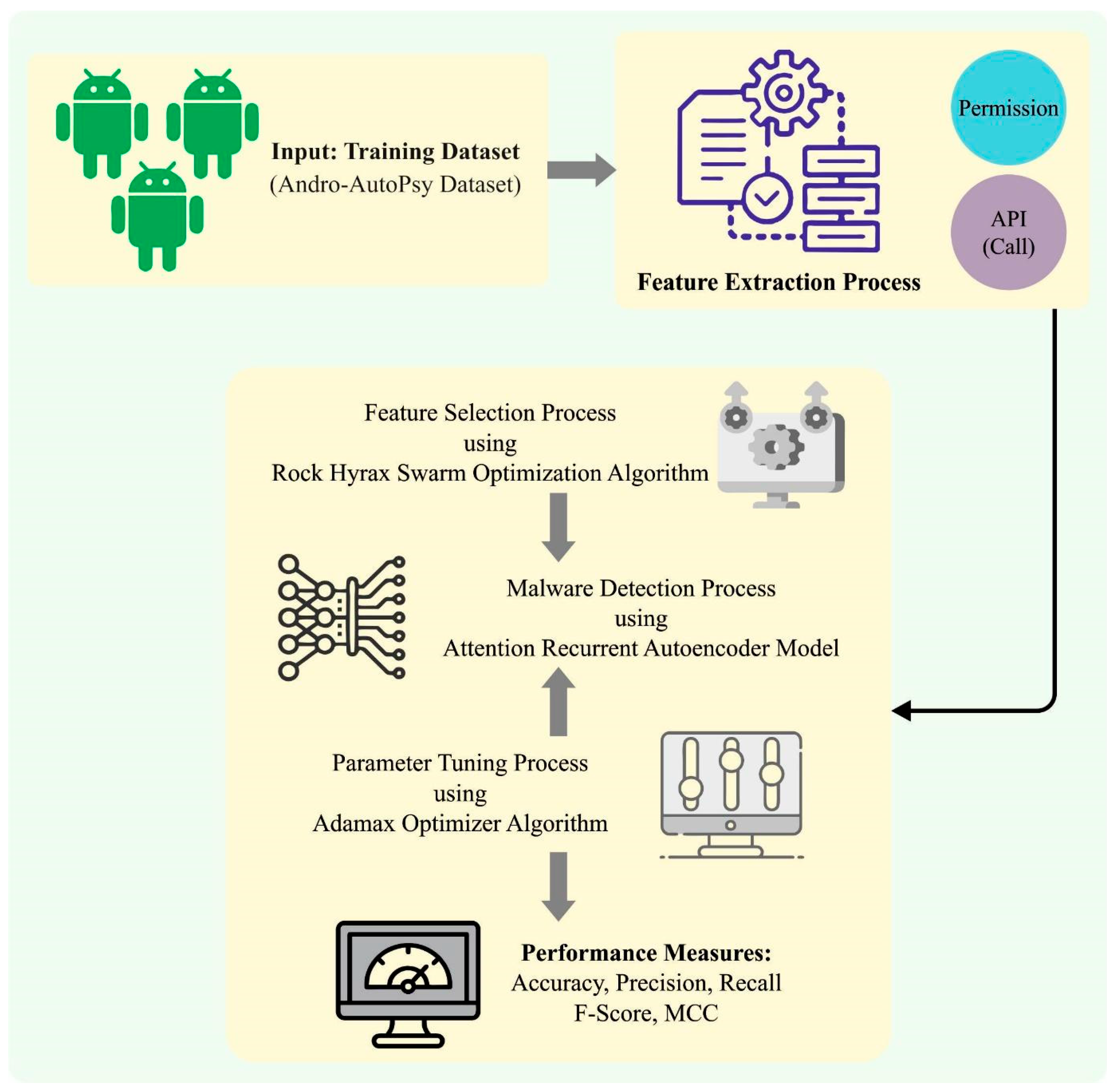
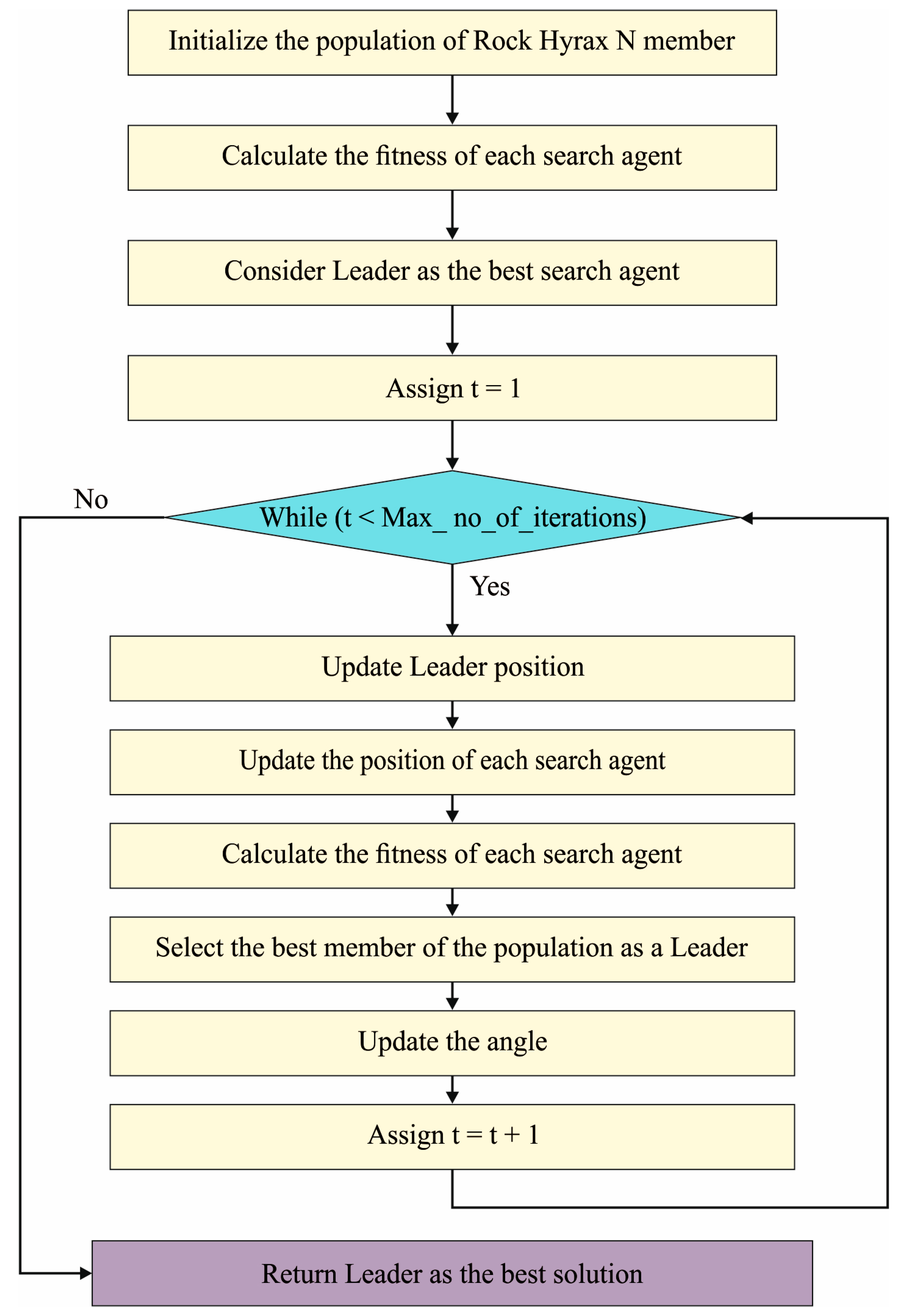
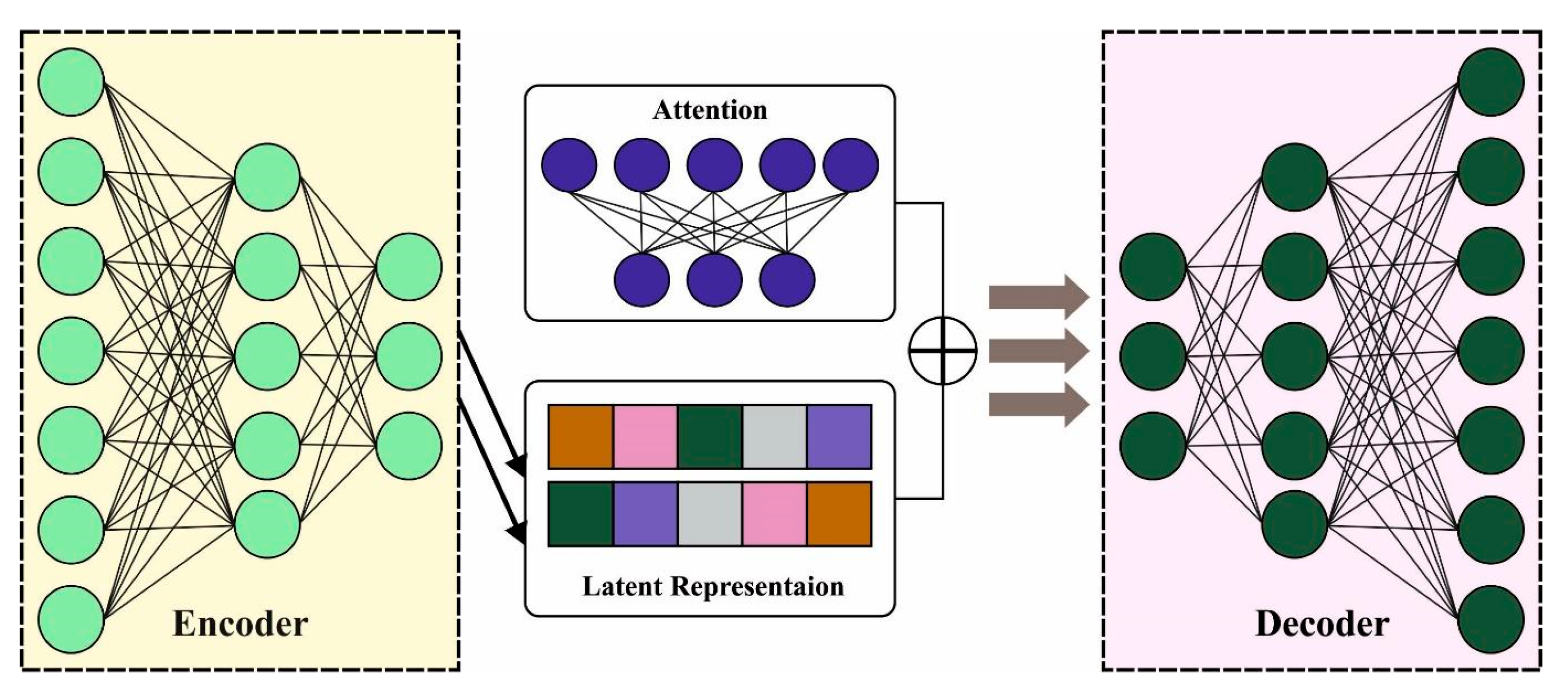
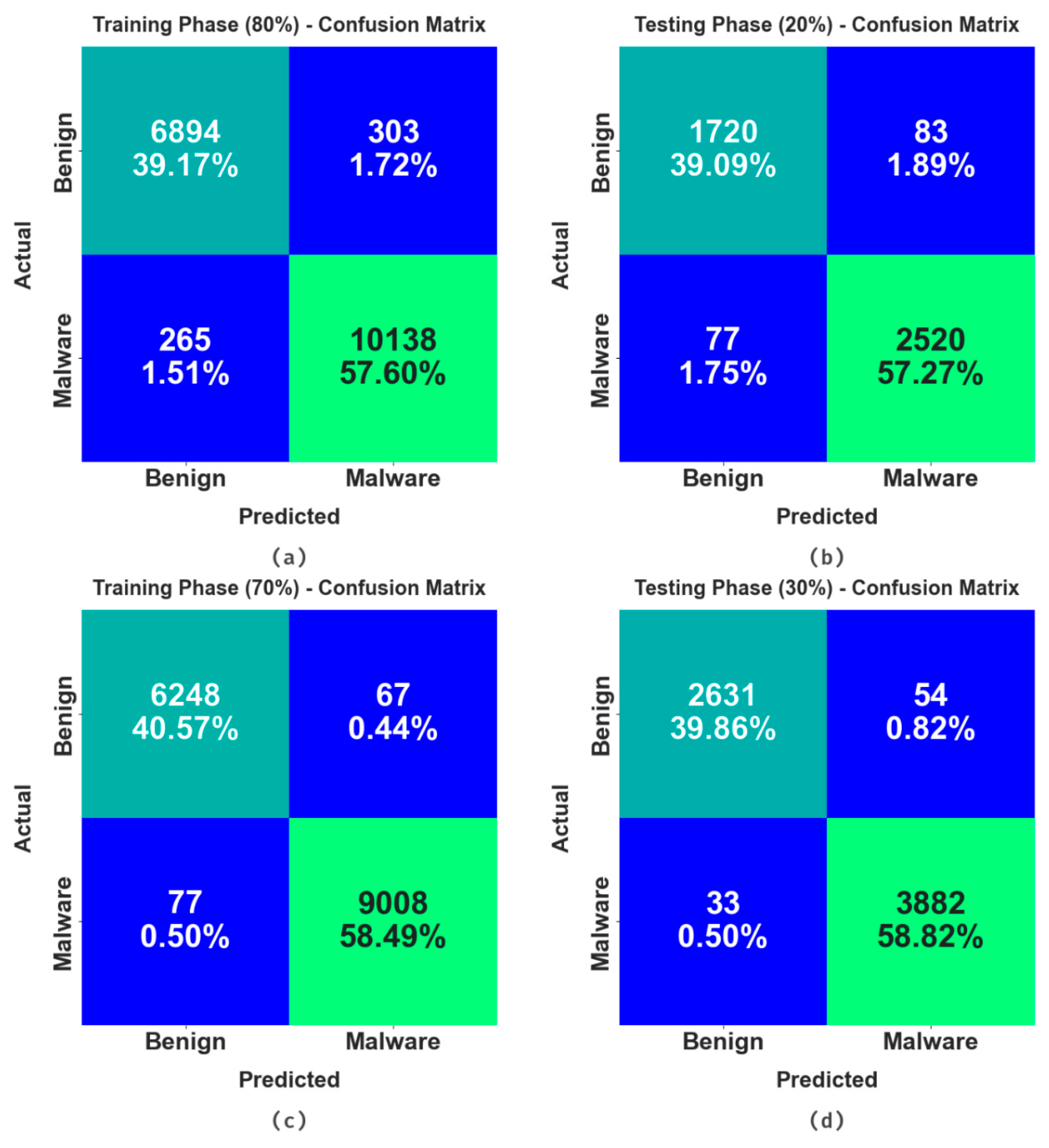
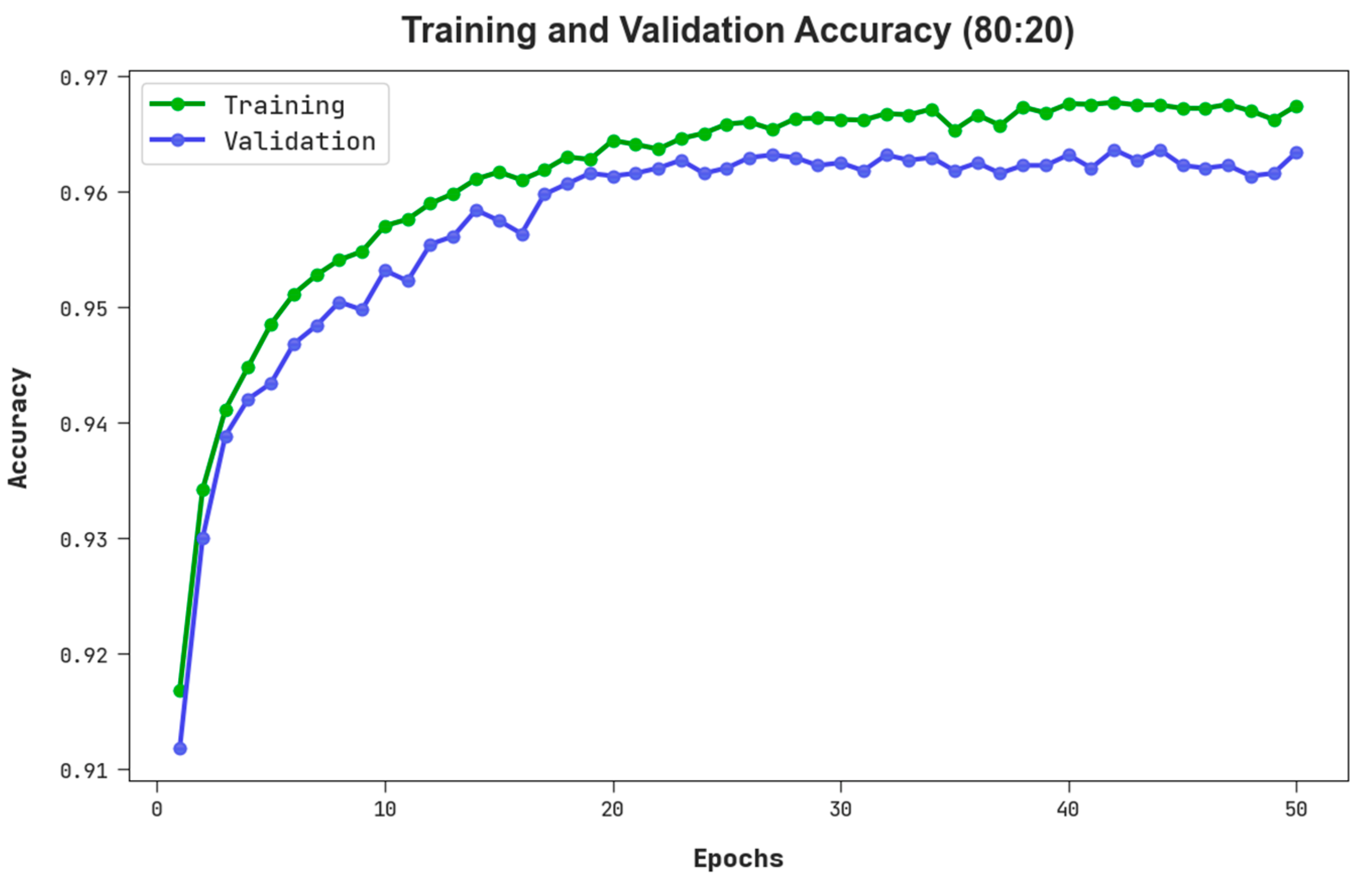
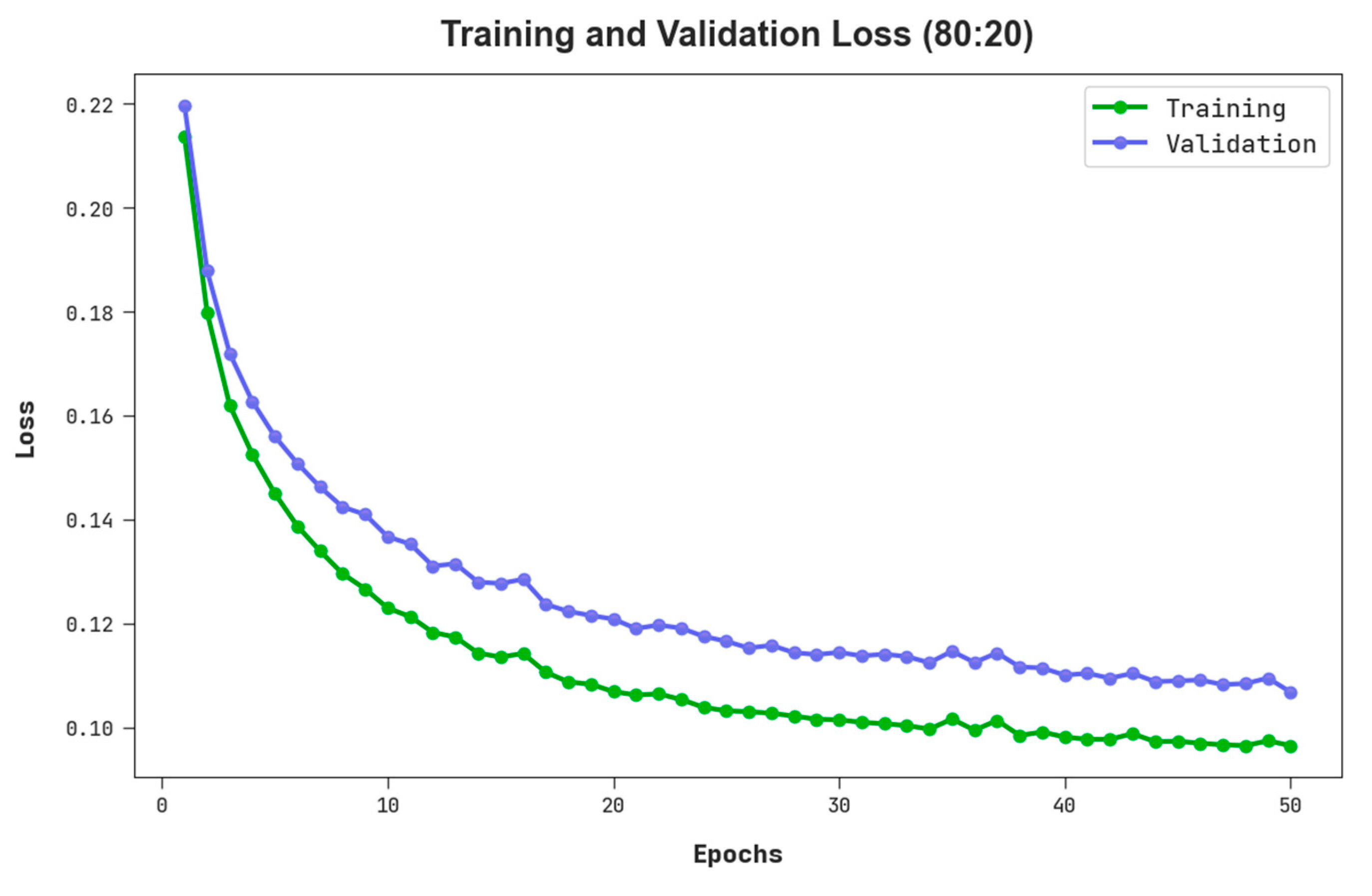
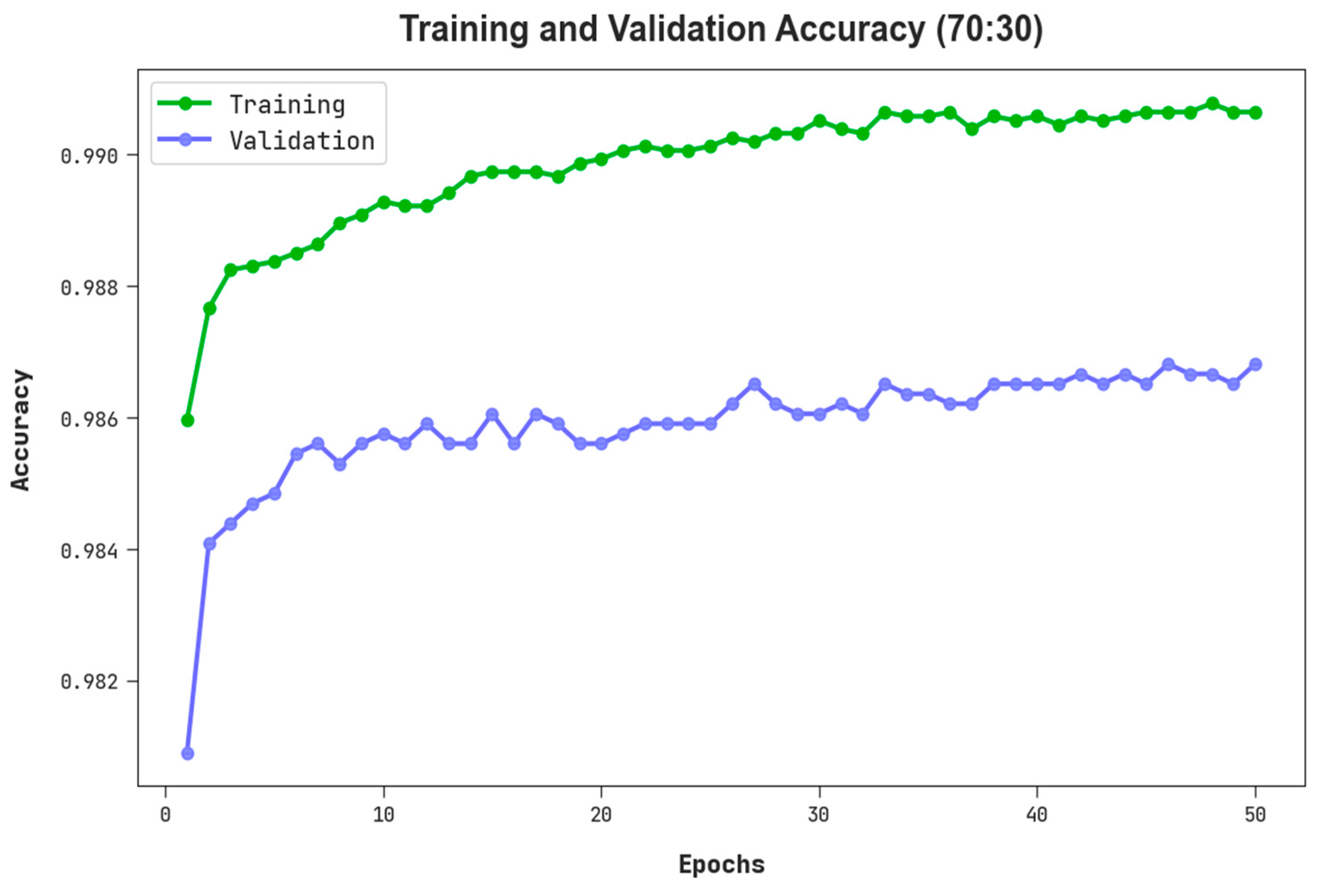
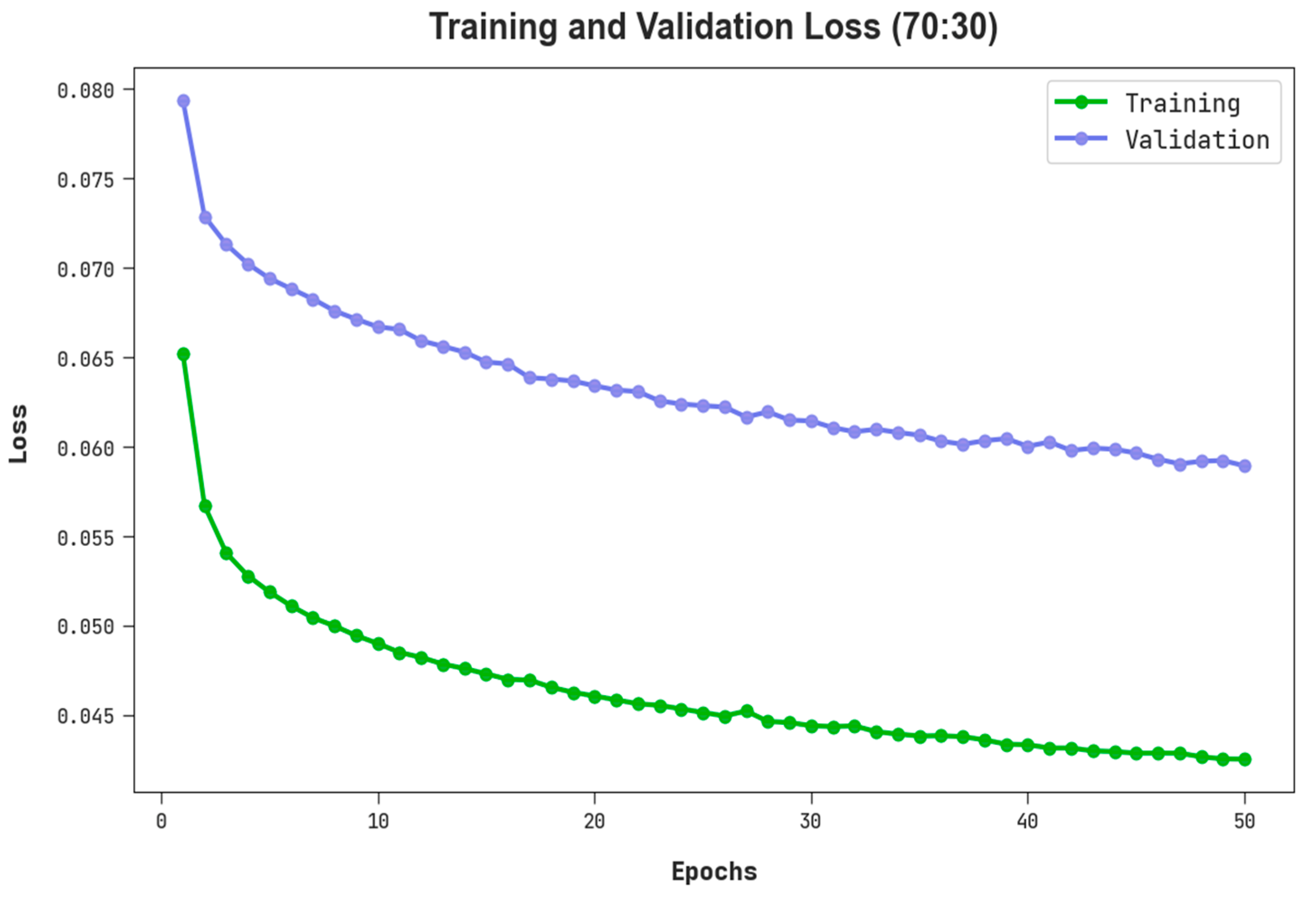
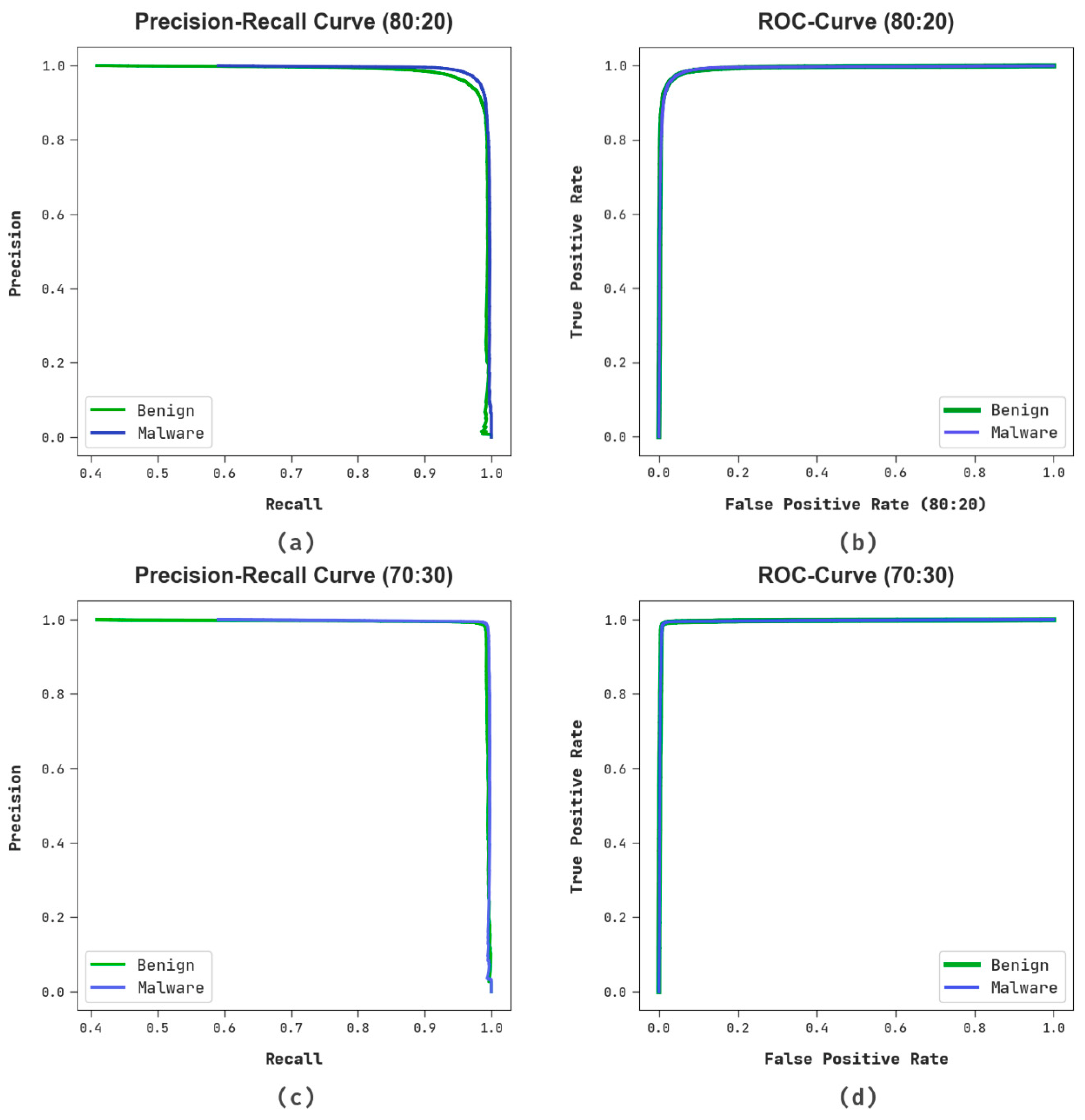
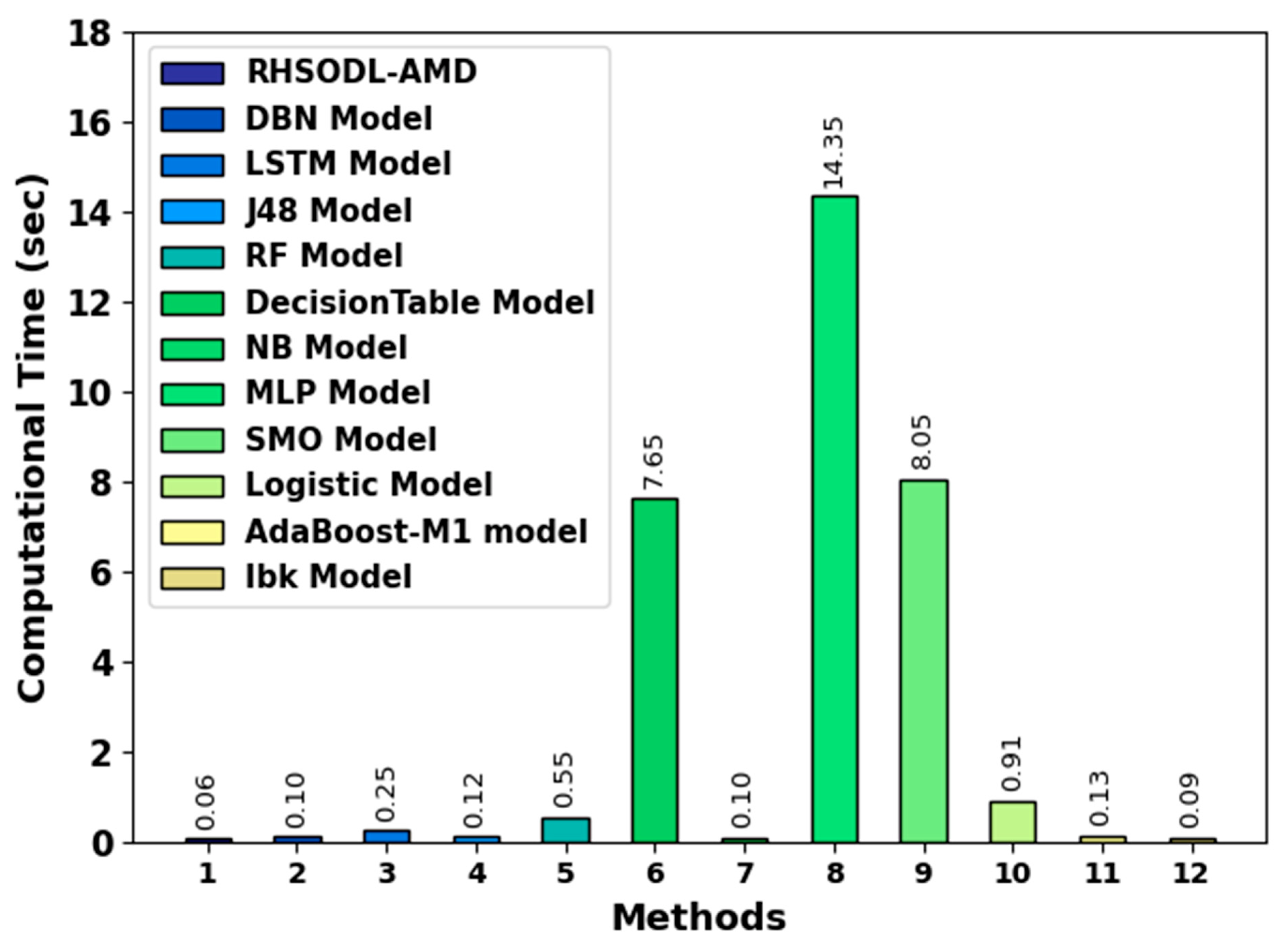
| Class | No. of Samples |
|---|---|
| Benign | 9000 |
| Malware | 13,000 |
| Total Number of Samples | 22,000 |
| Class | Accuracybal | Precision | Recall | F-Score | MCC |
|---|---|---|---|---|---|
| Training Phase (80%) | |||||
| Benign | 95.79 | 96.30 | 95.79 | 96.04 | 93.32 |
| Malware | 97.45 | 97.10 | 97.45 | 97.27 | 93.32 |
| Average | 96.62 | 96.70 | 96.62 | 96.66 | 93.32 |
| Testing Phase (20%) | |||||
| Benign | 95.40 | 95.72 | 95.40 | 95.56 | 92.48 |
| Malware | 97.04 | 96.81 | 97.04 | 96.92 | 92.48 |
| Average | 96.22 | 96.26 | 96.22 | 96.24 | 92.48 |
| Class | Accuracybal | Precision | Recall | F-Score | MCC |
|---|---|---|---|---|---|
| Training Phase (70%) | |||||
| Benign | 98.94 | 98.78 | 98.94 | 98.86 | 98.07 |
| Malware | 99.15 | 99.26 | 99.15 | 99.21 | 98.07 |
| Average | 99.05 | 99.02 | 99.05 | 99.03 | 98.07 |
| Testing Phase (30%) | |||||
| Benign | 97.99 | 98.76 | 97.99 | 98.37 | 97.27 |
| Malware | 99.16 | 98.63 | 99.16 | 98.89 | 97.27 |
| Average | 98.57 | 98.69 | 98.57 | 98.63 | 97.27 |
| Methods | ||||
|---|---|---|---|---|
| RHSODL-AMD | 99.05 | 99.02 | 99.05 | 99.03 |
| DBN Model | 96.81 | 97.46 | 96.82 | 97.99 |
| LSTM Model | 96.37 | 95.45 | 95.91 | 97.20 |
| J48 Model | 94.85 | 94.26 | 94.92 | 94.09 |
| RF Model | 94.93 | 94.38 | 94.92 | 94.69 |
| DecisionTable Model | 96.40 | 96.17 | 95.95 | 97.45 |
| NB Model | 96.64 | 97.42 | 96.74 | 97.72 |
| MLP Model | 95.25 | 94.66 | 95.27 | 95.49 |
| SMO Model | 97.05 | 97.48 | 96.92 | 98.26 |
| Logistic Model | 98.17 | 98.27 | 97.47 | 98.46 |
| AdaBoost-M1 model | 95.88 | 95.18 | 95.42 | 96.82 |
| Ibk Model | 96.41 | 96.89 | 95.95 | 97.48 |
Disclaimer/Publisher’s Note: The statements, opinions and data contained in all publications are solely those of the individual author(s) and contributor(s) and not of MDPI and/or the editor(s). MDPI and/or the editor(s) disclaim responsibility for any injury to people or property resulting from any ideas, methods, instructions or products referred to in the content. |
© 2023 by the authors. Licensee MDPI, Basel, Switzerland. This article is an open access article distributed under the terms and conditions of the Creative Commons Attribution (CC BY) license (https://creativecommons.org/licenses/by/4.0/).
Share and Cite
Albakri, A.; Alhayan, F.; Alturki, N.; Ahamed, S.; Shamsudheen, S. Metaheuristics with Deep Learning Model for Cybersecurity and Android Malware Detection and Classification. Appl. Sci. 2023, 13, 2172. https://doi.org/10.3390/app13042172
Albakri A, Alhayan F, Alturki N, Ahamed S, Shamsudheen S. Metaheuristics with Deep Learning Model for Cybersecurity and Android Malware Detection and Classification. Applied Sciences. 2023; 13(4):2172. https://doi.org/10.3390/app13042172
Chicago/Turabian StyleAlbakri, Ashwag, Fatimah Alhayan, Nazik Alturki, Saahirabanu Ahamed, and Shermin Shamsudheen. 2023. "Metaheuristics with Deep Learning Model for Cybersecurity and Android Malware Detection and Classification" Applied Sciences 13, no. 4: 2172. https://doi.org/10.3390/app13042172
APA StyleAlbakri, A., Alhayan, F., Alturki, N., Ahamed, S., & Shamsudheen, S. (2023). Metaheuristics with Deep Learning Model for Cybersecurity and Android Malware Detection and Classification. Applied Sciences, 13(4), 2172. https://doi.org/10.3390/app13042172





